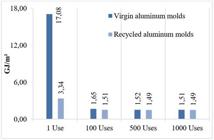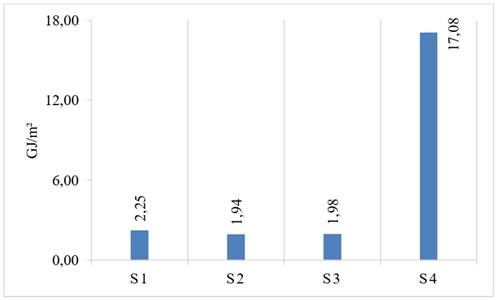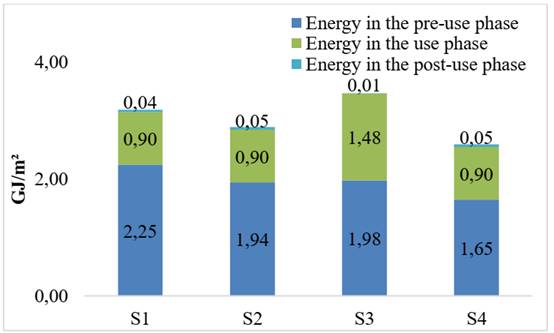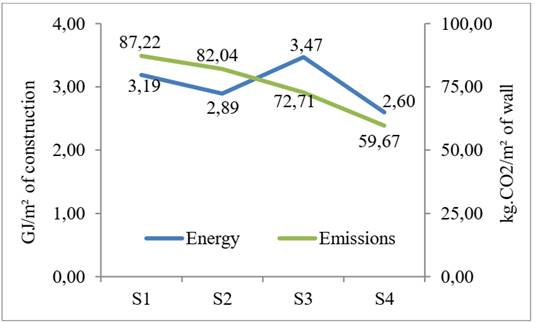Abstract
Wall systems have a wide range of embodied energy due to the diversity of materials available. This paper analyzes the expenditure of energy and carbon dioxide emissions in internal and external wall systems (IEWS) of a rural residence of social interest in Cascavel, state of Paraná, Brazil. The methodology proposed by NBR ISO 14040 was used to perform a life-cycle energy assessment (LCEA) and the carbon dioxide emissions assessment (LCCO2A) of these systems. Four scenarios were considered: reinforced concrete structure and ceramic blocks wall system, load-bearing masonry with concrete blocks, steel framing and reinforced concrete walls molded on site. As a result, it was found that it is possible to reduce energy consumption up to 25% by opting for reinforced concrete walls molded on site. In regards to CO2 emission, it was verified that the difference is even greater, being able to reduce emissions by almost 32% when opting for this same scenario.
Keywords:
Building materials; Embodied energy; Sustainability

 Thumbnail
Thumbnail
 Thumbnail
Thumbnail
 Thumbnail
Thumbnail
 Thumbnail
Thumbnail
 Thumbnail
Thumbnail
 Thumbnail
Thumbnail
 Thumbnail
Thumbnail
 Thumbnail
Thumbnail
 Thumbnail
Thumbnail
 Thumbnail
Thumbnail
 Source: Empresa Paranaense de Assistência Técnica e Extensão Rural (
Source: Empresa Paranaense de Assistência Técnica e Extensão Rural (







